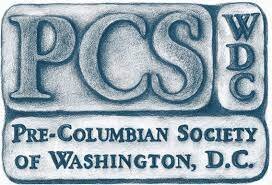This talk will contemplate the meaning of artist technology, focusing on the use of molds in ceramic production. The leitmotif is a style of ceramic vessel known as Rio Blanco, produced in the Mixtequilla region of Veracruz, Mexico (circa AD 600-1000). The vessels present only a few pictorial themes, but with notable variations of each within the corpus. The use of molds was not for mass production of identical objects. Instead, artists used existing vessels as the model for each subsequent work, creating single-use molds each time. Dr. Just will consider this technique in relation to other artistic acts in Mesoamerica involving direct, intimate engagement with existing objects, such as the modification of sculptures over time and the use of stamps.
Bryan R. Just is the Peter Jay Sharp, Class of 1952, Curator and Lecturer of the Art of the Ancient Americas at the Princeton University Art Museum. Just received a B.A. in Archaeological Studies and the History of Art from Yale University (1995) and an M.A. (1999) in Art History and a Ph.D. (2006) in Art History and Linguistics, both from Tulane University. A specialist ancient Maya art history, his publications include Dancing into Dreams: Maya Vases of the Ik’ Kingdom (2012) and “Printed Pictures of Maya Sculpture” (2012). He served as in-house curator for the exhibition Gifts from the Ancestors: Ancient Ivories of Bering Strait, co-curated by William Fitzhugh and Julie Hollowell, from October 2009 – January 2010 at Princeton. His 2012 exhibition Dancing into Dreams: Maya Vases of the Ik’ Kingdom was one of five finalists for the Association of Art Museum Curators 2012 Outstanding Exhibition in a University Museum. In 2015, he reopened the completely refurbished ancient Americas galleries at the Princeton University Art Museum. Just’s teaching at Princeton includes seminars on Maya and Olmec art, as well as introductory lecture courses on the art of Mesoamerica. Just chairs Princeton University’s NAGPRA committee. He is currently writing a handbook of the Museum’s collections from Mesoamerica and developing the galleries for the new Princeton University Art Museum, scheduled to open late 2024.

